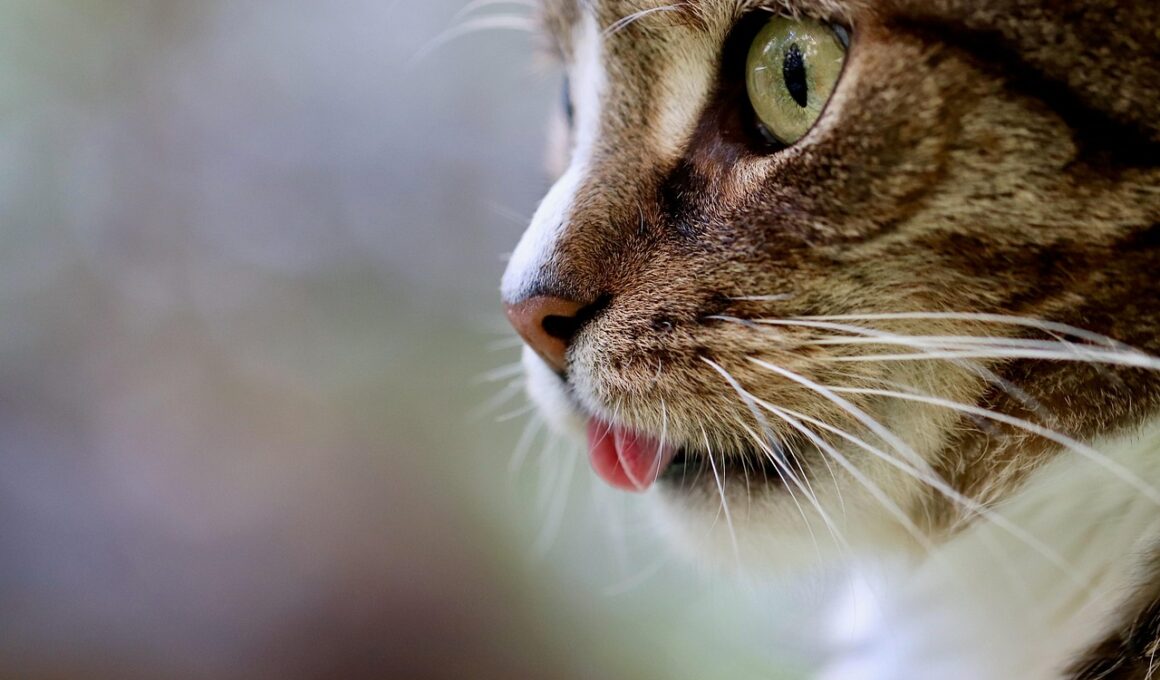Navigating Cat Insurance Claims After Surgery
Filing a cat insurance claim after your furry friend has undergone surgery can be daunting. The first step is to contact your insurance provider and familiarize yourself with their claims process. Most companies have specific guidelines and timelines for filing claims, so being aware of these will help you navigate the situation smoothly. Begin by reviewing your policy documents to understand what is covered. Commonly, insurance covers accidents and illnesses, but surgical procedures may require specific documentation. Gather all necessary paperwork, including invoices, medical records, and a completed claim form. This documentation acts as proof and validates your claim. It is important to ensure that all information is accurate and detailed. Sending incomplete claims can delay the process. You should also find out if pre-authorization is needed before surgery, as skipping this step could lead to rejection later. Additionally, keep copies of all submitted documents for your records. Understanding and following the claim process makes it easier to manage the reimbursement and reduces stress during a challenging time for you and your pet.
After ensuring you have the necessary documentation, consider submitting your claim as soon as possible. Different companies have their own submission time frames, with many recommending that claims be filed within a certain number of days post-surgery. An expedited claim submission ensures timely processing, which is particularly helpful if you’re facing veterinary bills that may be accumulating. Most pet owners find peace of mind knowing they have taken the right steps to seek coverage for unexpected medical costs. Some insurance providers offer online submission, making the process even quicker and more convenient. If you’re submitting the claim via traditional mail, use a reliable service to track your documents. This way, you can receive confirmation that your information has been sent. Most companies also provide portals where you can track the status of your claim as it moves through the review process. If you encounter any issues or have questions, don’t hesitate to contact your insurance provider’s customer support team for immediate assistance. Knowing when to reach out proactively can make the difference in speeding up the claims process.
Understanding Your Coverage and Exclusions
It is essential to thoroughly read your cat insurance policy regarding surgical coverage. Some breeds or pre-existing conditions may be exempt from certain types of coverage. Common exclusions include elective surgeries, such as spaying or neutering, which typically do not fall under standard coverage. Understanding the distinctions can help prevent misunderstandings when filing a claim. Moreover, familiarize yourself with the reimbursement rates set forth in your policy; these can vary significantly based on your coverage type, premiums paid, and deductibles. It’s beneficial to communicate these rates with your veterinarian to avoid surprises during the claim approval process. Some insurance companies may even have specific veterinarians they partner with, which could make claiming more straightforward. Please note that waiting for approval after submitting a claim can sometimes feel lengthy. Familiarize yourself with average waiting times to manage expectations. Follow up regularly with your insurance provider to expedite any necessary communications or additional documentation requests. Proactive communication often aids in resolving issues quickly, allowing you to focus more on your cat’s recovery.
After surgery, it is natural to be worried about your pet’s condition and the associated costs. Understanding how coordination between your veterinarian and the insurance company works can help expedite claims. It is crucial that veterinarians understand the diagnostics and treatments necessary for claims filing under your insurance policy. Most vet clinics are accustomed to dealing with insurance claims, but providing them with sufficient details regarding your coverage may facilitate the process. They may need to supply records and detailed explanations of your pet’s condition and the surgery performed. Additionally, ask your vet if they can assist in submitting claims directly on your behalf; many clinics offer assistance with document preparation. If you are uncertain about what your insurance covers, don’t hesitate to reach out directly to your provider. Some companies even offer a pre-approval option which allows you to obtain estimated costs and coverage before the procedure, helping alleviate financial strain post-surgery. Being informed and prepared ensures a smoother reimbursement process, ultimately allowing you to focus on your cat’s healing journey.
Dealing with Rejection and Denial
In some cases, claims can be denied, which can be bewildering. If you receive a denial notice, don’t panic. The first step is to carefully read the reason for the denial. Common reasons include incomplete documentation, services not covered under your plan, or failure to provide prior authorization for treatment. Should you disagree with the rejection, you can initiate an appeal by gathering supporting documentation. This documentation may include additional medical records from your veterinarian or a statement justifying the necessity of the surgery. It helps if you can have your vet write a detailed letter explaining the medical necessity of the procedure. Submitting the appeal promptly is crucial, as many insurers have strict deadlines for re-evaluating claims. Keep in constant communication with your insurance provider during this process. Document conversations and take notes of any promised actions. Having a detailed record will back you should there be further issues. Stay persistent and make sure your pet gets the care they need. Remember that appeals can sometimes take time, so patience is critical.
Do not overlook the benefit of seeking guidance from your vet during the claims process. Many veterinary offices are experienced in dealing with insurance claims and can provide support by answering any questions you may have. They often understand the intricacies of various insurance policies and may have had past experiences that can guide you along the way. Furthermore, having open lines of communication regarding support can bolster the chances of successful claims. Always ensure that you have clear and organized records of what’s been paid and what remains outstanding. This organization can prove beneficial if your insurance company requires detailed reports or additional information later. You can also keep a log of your pet’s recovery and response to treatment following surgery. If issues arise or your cat seems to have complications post-surgery, these details will be invaluable. In the event of a subsequent claim, this robust record can support your discussion with your insurer, providing necessary details should you need to file further claims. This proactive approach keeps your pet’s health and wellbeing at the forefront during all interactions.
Conclusion: Peace of Mind with Cat Insurance
When navigating cat insurance claims after surgery, the key lies in being organized and informed. Familiarizing yourself with your policy, keeping robust documentation, and maintaining proactive communication with your insurer and veterinarian simplifies the process. While it may seem complex at first, a methodical approach leads to successful reimbursement, reducing stress during recovery. Always remember that your insurance provider is there to help—inquire about unclear areas within your policy and build familiarity to ease eventual claims. If at any point you feel overwhelmed, take a moment to breathe and recenter yourself. Focus on your cat’s healing journey, enriching the time spent with your furry companion during recovery. Your cat’s health is paramount, and knowing you have a financial safety net can provide significant peace of mind. Remaining diligent after surgery can also prevent issues down the road. Rely on your veterinary practice, as they serve as an essential partner in navigating this process. Ultimately, cat insurance acts as a safeguard for unforeseen medical treatment costs and ensures your pet receives the best care available.
In conclusion, the experience of filing a claim after your cat’s surgery may initially be overwhelming, but using outlined tips can make the journey smoother. With each step taken proactively, like understanding your policy and maintaining open communication, you increase your confidence in navigating any financial hurdles that arise. Familiarize yourself with the ins and outs of your coverage to prepare for the unexpected. Utilize the resources available through your veterinarian and insurance provider to streamline the process. This combined effort helps ensure both you and your beloved feline can focus on recovery rather than worrying about bills. Embrace the peace of mind that comes with being prepared and informed. Awareness of the claims process is essential in alleviating stress, both for yourself and your pet. Rely on the community around you, as they can provide support and guidance. Remember that every effort you invest in this area pays dividends in your cat’s well-being. Finally, staying persistent through any potential claims challenges reaffirms your commitment to providing the best care possible for your furry friend. Use these strategies to make the claims process less daunting.


